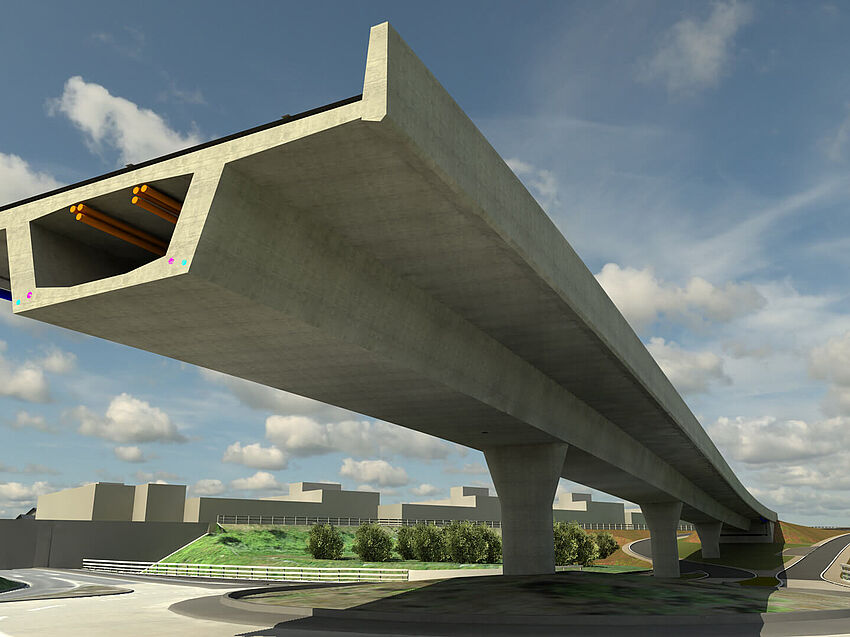Proper planning at every stage is important for all construction projects, and bridge design is no exception. Perhaps most crucial is the conceptual stage. Using the right tools to test different designs can help reveal the best, most cost-effective choice, ultimately leading to saved time and materials and a strong outcome.
For AEC teams, the process of modeling multiple design iterations can be time-consuming and labor-intensive. Drafters must find the design that has the best value when it comes to functionality, life-cycle cost, performance, and many other metrics. For drafters looking for a more efficient and accurate process, 3-D modeling tools can help them reach their targets for time and money spent on the conceptual stage.
With building information modeling (BIM) software, architects can create a detailed 3-D model of a bridge, helping to minimize conflicts and discrepancies in the conceptual design process and increasing the accuracy of schematic estimates. This increased accuracy at each step helps to mitigate any potential issues that could come up and slow down the process during the construction phase.
A key benefit of BIM software is that it allows for easy collaboration between stakeholders, from the conceptual design phase and beyond. With paper plans, it can be difficult to share information between groups, and communicating to the necessary parties each time a draft is updated can become difficult. BIM software allows for focused collaboration all in one place, so everyone from the architect, to engineers, to the project owner can keep tabs and offer input until the right solution is found. This ultimately speeds up the process and allows architects to get feedback and implement changes with ease.
BIM software created especially for bridge design allows for 3-D parametric modeling that considers the road layout, bridge alignment, and required cross-sections for a streamlined process. Today’s advanced software uses formulas to automatically calculate proper cross-sections and complex geometries based on an architect’s input, saving time and effort.
For bridge building in particular, it is important that architects are using the most efficient processes to ensure deadlines are met. The faster the conceptual stage can conclude, the sooner construction on the bridge can begin. This ultimately means that roadway closures will be curtailed, budgets will be met, and public agencies will ultimately be happy with a job well-executed.
AEC teams adopting BIM technologies are seeing results—a study from McKinsey1 found that 75% of those that adopted BIM reported a positive ROI, and saw shorter project life cycles and savings on paperwork and material costs. Time is money when it comes to construction, and BIM software can bring savings in both.
For more on the benefits of conceptual bridge design and how 3-D visualization technology works, check out this free webinar from BIM software company ALLPLAN.
Source:




